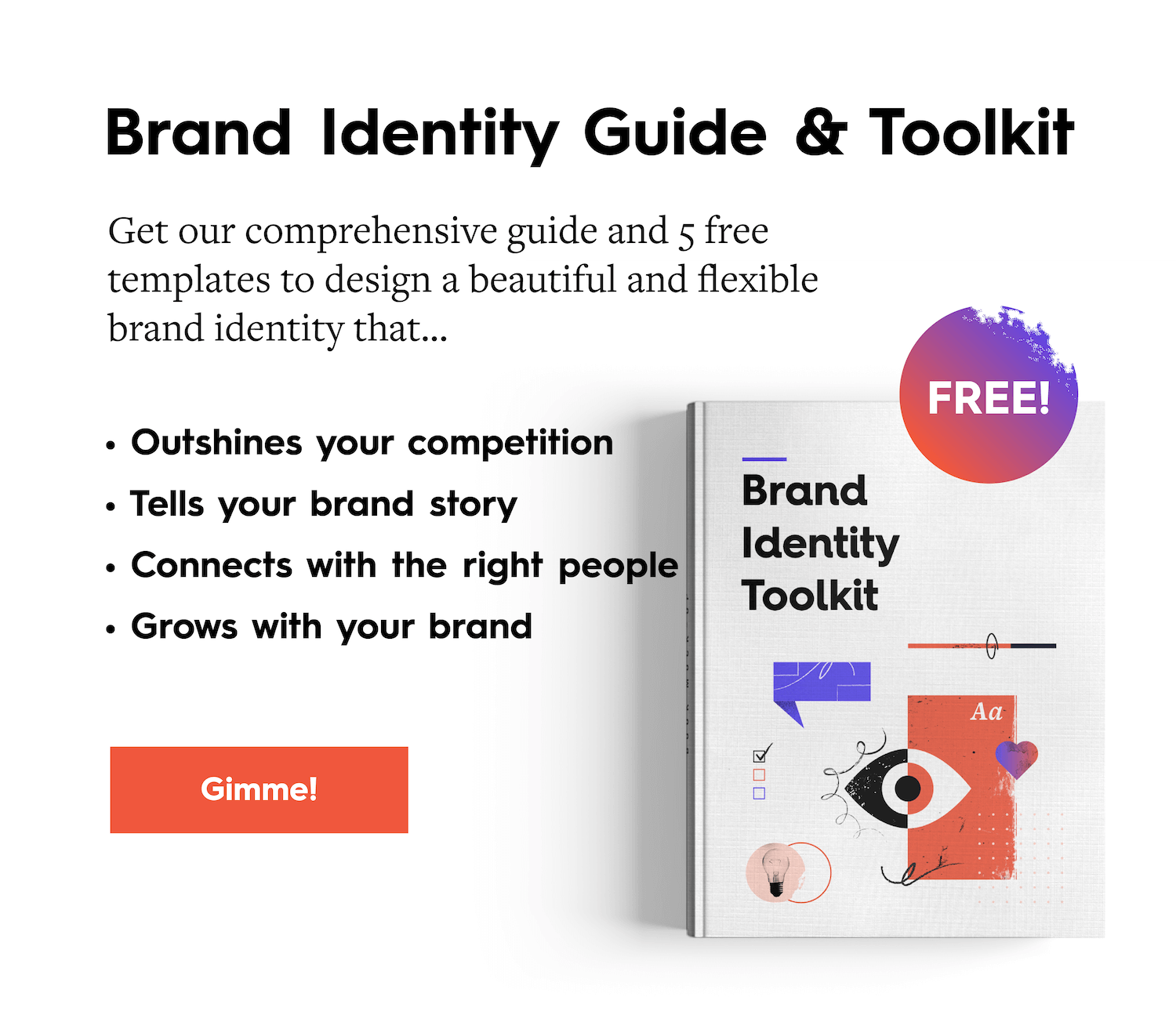At a time when engagement marketing has quickly overtaken interruption marketing, branded content is one of the best tools for marketers to connect with people. But if your content doesn’t properly communicate your brand, it won’t help you increase brand awareness, engage your audience, or achieve your goals. We’ve seen plenty of brands struggle with this issue, and we don’t want you to be one of them. So we’ve put together this handy checklist to help you ensure that every piece of content you put out is up to par and, most importantly, on brand.
Before we dive in, however, let’s talk about why not all branded content is created equal.

The Keys to Good Branded Content
Good branded content communicates your brand story. It shows people who you are, what you do, and how you help them. Unfortunately, brands often think that creating any sort of content means they’re making good branded content. But you can’t just slap your logo on something and call it a day. Whether it’s an annual report, infographic, or video, you need to create content that makes a memorable and meaningful impression. The ability to do this well is one of your biggest competitive advantages in an increasingly crowded marketplace. Why? Because good branded content helps you build stronger connections with your audience in three key ways:
- Appeal: Well-designed content intrigues people and entices them to interact with your brand.
- Memorability: Visual content (in particular) is easier to synthesize than plain old text, simply because our brains process visual information faster. The more effectively you apply your visual identity, the easier it is for people to consume, comprehend, and recall your content.
- Awareness: The more consistent you are, the more people see you as a credible, reliable resource. This is the key to building trust and, as a result, a long-term relationship with the right people. If the content you create is segmented, siloed, or scattershot, with no thought to branding, design, or presentation, it’s much harder to nurture that relationship.
Most importantly, branded content is what consumers want and expect—and it’s more effective than traditional forms of advertising. According to The Emotional Impact of Branded Storytelling study by Realeyes/Turner Ignite, branded content elicits stronger emotions than a traditional 30-second advertising spot.
When compared to traditional advertising, the study also found that branded content made viewers:
- 62% more likely to have a positive reaction.
- 31% more emotionally engaged.
- 17% more likely to buy.
Tl;dr if you’re looking to make meaningful connections with the people who need your product or service, branded content is the way to go. But branded content is only effective if it provides value and accurately reflects your brand. Much of the branded content we see falls into one of the following categories:
- Overbranded: It is centered only around the brand, self-referential, or visually over-branded.
- Underbranded: There is little or no visible branding. It is generic, boring, or completely forgettable.
- Misbranded: The branding is inconsistent or notably off-brand.
You want to avoid all of these cardinal sins, so before you upload your next video, send that email to your subscriber list, or press publish on your latest ebook, use our checklist to make sure you’re creating the highest-quality branded content that will give you true ROI.
Your Branded Content Checklist
Pro tip: Share this checklist with all brand creators to ensure you always create cohesive, consistent content.
1) Identify the value to your audience.
This is one of our biggest pet peeves in content marketing. Brands come up with seemingly “brilliant” ideas, but they can’t identify how or why they connect to their audience (or even to their brand).
- Is this idea interesting and relevant to your audience?
- What pain points/needs/wants does this content address?
- Are there clear takeaways?
- What will someone learn/how will they be better after engaging with this content?
Tip: Vet ideas according to your marketing personas. If you’re struggling to come up with strong ideas, follow our tips to create high-value content, and use these 5 ideas to tell your brand story as prompts for your next brainstorm.
2) Ensure your messaging is accurate and consistent.
Telling a consistent, cohesive story is the #1 way to build brand awareness and recognition. Messaging is a huge part of that, but we see many brands miss the mark with weak or off-brand messaging. Double-check that your content delivers the right message, talking points, and ideas.
- Are you using the right phrasing or keywords?
- Is there a clear message, or are you trying to introduce too many ideas in one piece?
- Does this content support your overall messaging framework?
No matter how big or small your content is, everything from your gated ebooks to your homepage CTAs should support your brand story.
Tip: Build your brand messaging framework (including tagline, value prop, and key stories) to guide your content creation. (This is also a convenient tool to share with freelancers or other people creating content on your brand’s behalf.)
3) Showcase your voice, tone, and personality appropriately.
The way you speak, write, joke, etc. are all unique to your brand—and they are a great way to stand out from the crowd. Whether it’s a video script or a social status update, inject your brand personality into every piece of content to humanize your brand and become an accessible resource.
- Is the content’s tone consistent with your brand personality?
- Does the tone match the subject matter?
- Are you using the right slang or phrases?
Tip: If you haven’t clearly identified and articulated your brand voice, answer the questions in our brand voice template to find it.
4) Design according to your visual identity.
From your products to your website, the way your brand “looks” tells its own story. (Good design isn’t just a differentiator; it’s what people expect these days.) Make sure you have a comprehensive, cohesive visual identity that includes all of the elements designers need to create branded content, including:
- Logo
- Color
- Typography
- Data visualization
- Photography
- Illustration
- Iconography
This identity should be applied accurately and appropriately to all your content. (Sidenote: Don’t add your logo more than once!) When it comes to your visual identity, remember that the devil is often in the details.
- Are your brand color codes correct?
- Does the imagery match your brand’s aesthetic?
- Does imagery reflect your brand values (considering age, race, gender, etc.)?
- Is there a clear hierarchy in layout? Is content easy to follow?
Tip: Follow our guide to build a comprehensive brand identity, use our visual identity checklist, and bookmark these 100+ tools to build a brand identity.
5) Consider SEO and accessiblity.
You put a lot of work into creating content, so you want people to be able to find it. SEO and accessibility play a huge role in your visibility.
- Are brand-specific and industry-relevant keywords included?
- Is the content easy to read (e.g., proper use of headings, bullet points, and short paragraphs)?
- Are all images accompanied by appropriate alt text?
- Are meta titles and descriptions aligned with your brand and SEO strategy?
- Have you added appropriate disclaimers or privacy notifications?
Tip: A lack of inclusion and accessibility can significantly hurt your brand’s reputation. See our tips to fight bias and create more inclusive marketing.
How to Make It Easier to Create On-Brand Content
It’s important to sanity-check any content you put out into the world, but there are a lot of tweaks you can make internally to improve the quality of your content overall.
- Create a style guide. Include examples, tips, and guidelines for all designers and content creators working with your brand. See our guide to build a brand style guide that’s easy to use.
- Create templates. If there are types of content you regularly produce, create branded templates to ensure consistency and cut down on design time.
- Assign a brand steward. This team member should oversee brand adherence for all content.
- Improve your brand storytelling skills. Telling your brand story is an ongoing process. Learn about the 5 ingredients you need to tell a good brand story, get inspired by these 7 examples of creative brand storytelling, and find out how to tell the right story at every stage of the buyer’s journey.
And if you need help at any stage of the process (from ideation to design), consider bringing in some support. Follow these tips to find the right creative agency for you, or holler at us. We’d love to create branded content that beats your competition.





